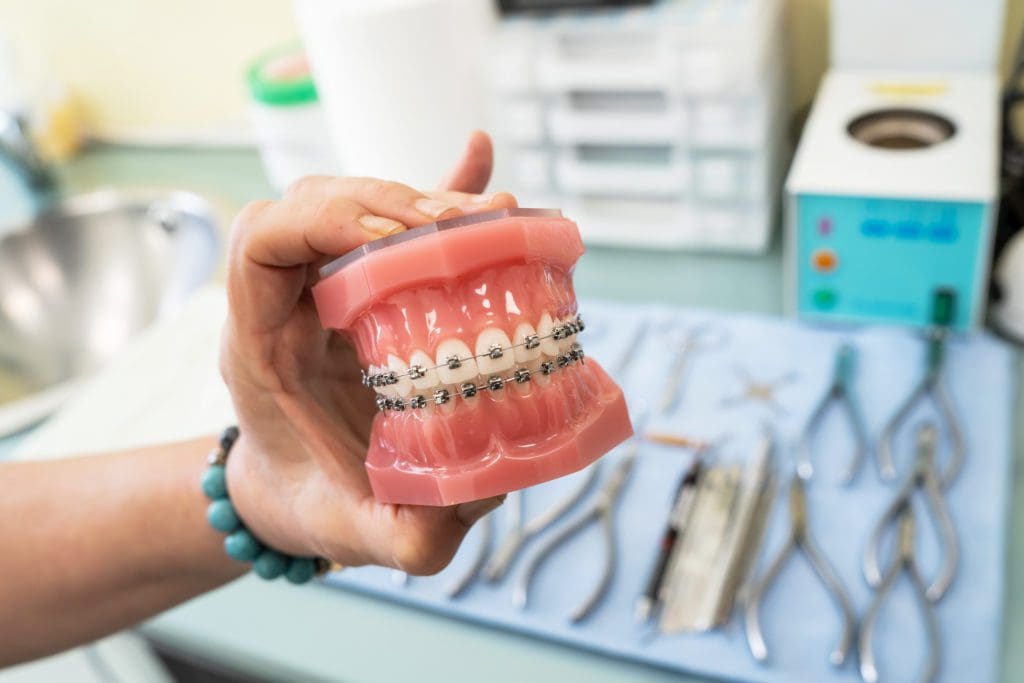Finding the Right Cumming Orthodontist for Your Braces and Aligners Needs
Finding the Right Cumming Orthodontist for Your Braces and Aligners Needs
Blog Article
Comprehensive Overview to Orthodontics Treatments for Remedying Dental Imbalances
Recognizing the intricacies of each treatment, including their systems, advantages, and possible downsides, is important in making notified decisions about one's orthodontic treatment. As we navigate through the thorough overview to orthodontic treatments for dealing with oral imbalances, the elaborate details of each approach will certainly unravel, losing light on the path toward a useful and unified dental alignment.
Orthodontic Procedures Review

In enhancement to typical braces and clear aligners, orthodontists may also suggest various other interventions like headwear, palatal expanders, or retainers to address certain alignment issues (aligners). These treatments are tailored to every individual's distinct demands and may entail a combination of treatments to achieve the preferred outcomes. Routine changes and tracking are important components of orthodontic therapy to make sure development is on track and to make any kind of needed alterations along the road. By going through orthodontic treatments, clients can not only accomplish a straighter grin but likewise enhance their overall dental health and feature.
Standard Braces: Exactly How They Work
When thinking about orthodontic treatments for dental misalignments, typical braces stand out as a time-tested approach for remedying teeth positioning. Typical dental braces contain brackets, wires, and bands that interact to use continual stress on the teeth, gradually relocating them into the desired placement. The braces are affixed to the teeth making use of an unique adhesive, and the wires are threaded with the brackets. By changing the tension of the cables, orthodontists can manage the direction and force applied to each tooth, directing them right into correct alignment gradually.
One key aspect of exactly how conventional braces job is the procedure of bone makeover. As stress is put on the teeth via the braces, the bone surrounding the teeth is improved to sustain the new tooth settings. This makeover is necessary for the long-term stability of the corrected positioning. Patients will certainly need normal modifications at the orthodontist's office to guarantee the braces continue to use the correct pressure for effective teeth motion.
Undetectable Aligners: Advantages And Disadvantages
Invisible aligners provide a very discreet and convenient choice to typical dental braces for fixing dental imbalances. These clear, tailor-made trays are essentially unseen when used, making them an attractive option for individuals seeking a more aesthetically pleasing orthodontic therapy. Among the key benefits of invisible aligners is their removability, permitting easier upkeep of dental hygiene compared to conventional dental braces. Individuals can remove the aligners before consuming or cleaning their teeth, lowering the danger of food getting embeded the appliance and simplifying the cleansing procedure.

Surgical Orthodontic Options
Surgical interventions in orthodontics existing feasible choices for attending to intricate dental imbalances that may not be properly solved with standard orthodontic treatments. While conventional dental braces and unnoticeable aligners can remedy lots of orthodontic problems, certain situations need surgical intervention to attain ideal outcomes. Surgical orthodontic options are generally suggested for severe malocclusions, substantial jaw discrepancies, and cases where the underlying bone framework requires adjustment to attain appropriate positioning.
One typical medical orthodontic treatment is orthognathic surgical treatment, which includes rearranging the jaws to remedy useful problems such as difficulty speaking or eating. This surgery is usually executed in partnership with an orthodontist who aids line up the teeth visit before and after the procedure. Surgical orthodontics may also involve treatments to subject affected teeth, remove excess periodontal tissue, or reshape the jawbone to develop a much more unified face account.
Before considering medical orthodontic options, people undergo a thorough examination to identify the requirement and prospective benefits of such treatments. braces. While surgical treatment might appear challenging, it can considerably improve both the feature and looks of the smile in situations where traditional orthodontic treatments fail
Retainers and Post-Treatment Treatment

Failure to conform with post-treatment treatment instructions can result in relapse, where the teeth progressively relocate back towards their initial settings. Regular retainer wear, excellent oral hygiene, and regular oral exams are necessary for preserving the outcomes accomplished through orthodontic surgical procedure and making certain the lasting security of the remedied oral positioning.
Verdict
In verdict, orthodontic procedures supply numerous alternatives for fixing dental misalignments. Conventional dental braces use metal braces and wires to change teeth right into appropriate alignment. Unnoticeable aligners browse around here offer a more discreet choice but may not appropriate for all cases. Surgical orthodontic choices are offered for more severe misalignments. Retainers are commonly used post-treatment to keep the brand-new alignment. On the whole, orthodontic treatments can effectively enhance oral wellness and visual appearance.
As we navigate with the extensive guide to orthodontic treatments for fixing oral misalignments, the detailed information of each approach will unravel, dropping light on the course toward a unified and functional dental placement. - cumming braces
One of the most common orthodontic therapies is the usage of braces, which are composed of steel braces and wires that use gentle stress to progressively move teeth into the wanted setting.When thinking about orthodontic therapies for dental misalignments, conventional dental braces stand out as a tried and true technique for remedying teeth placing. In addition, invisible aligners may not be appropriate for intricate orthodontic concerns that call for more significant teeth motion, as they are typically recommended for light to moderate situations. Retainers are custom-made orthodontic devices designed to hold teeth in their remedied positions after the completion of orthodontic therapy.
Report this page